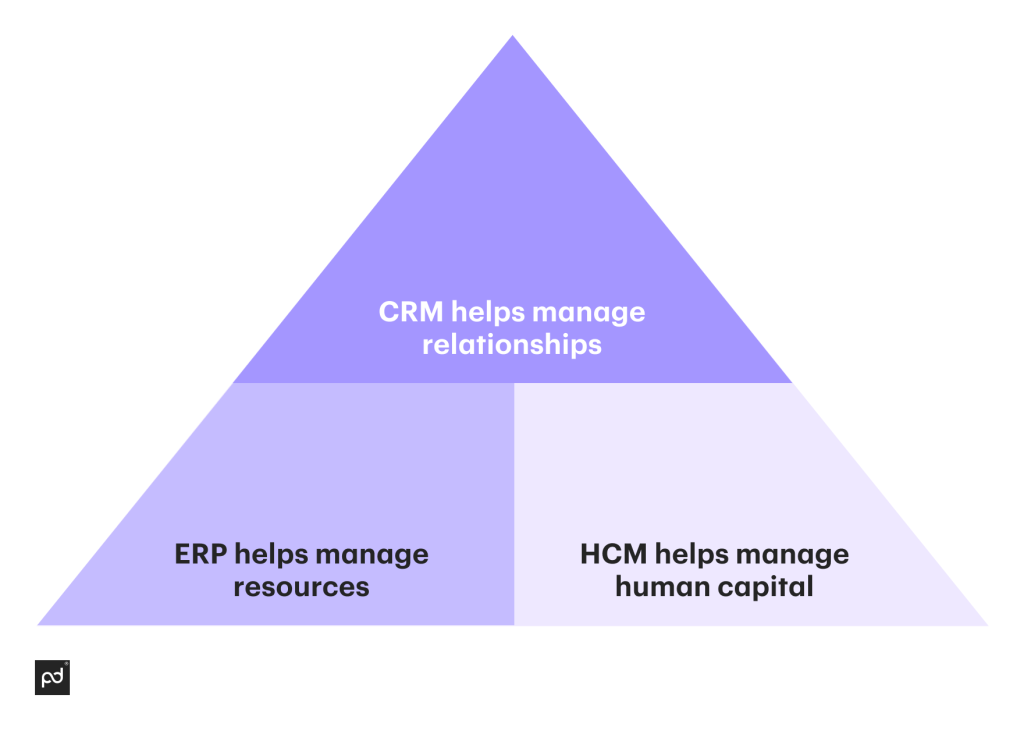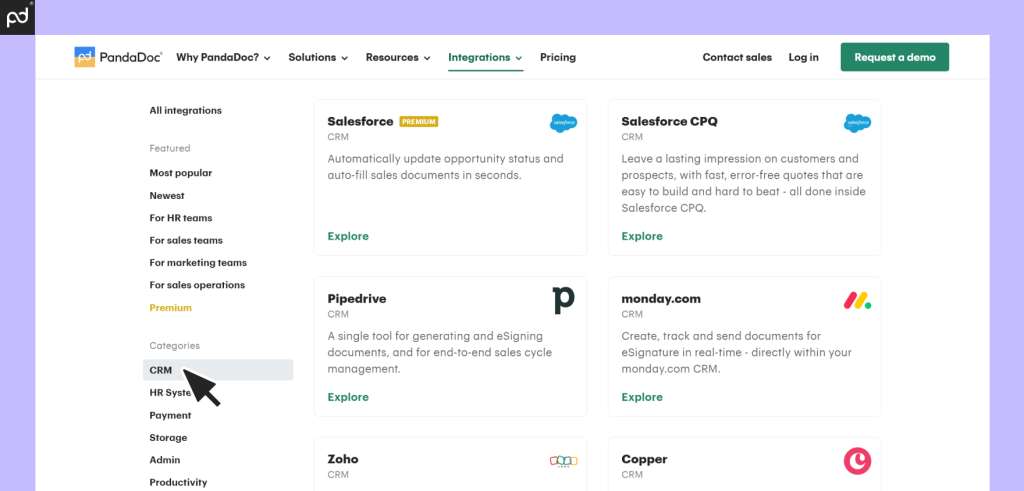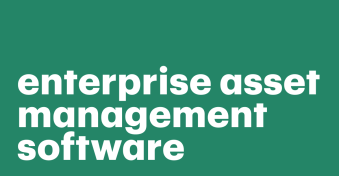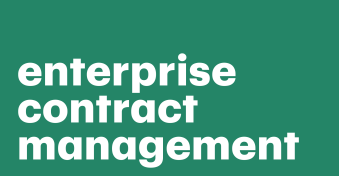Prioritizing relationships over transactions in enterprise sales can make all the difference — and enterprise CRM software is key to maintaining strong relationships with your customers.
For long sales lifecycles, such as in most B2B and enterprise sales processes, this is essential and helps you get customers’ repeat business (and, ideally, referrals).
After all, it’s called customer relationship management (CRM) for a reason. But for this strategy to work, a suitable enterprise CRM software tool is a must.
In this article, we’ll help you pick the best one for your business and explain how to use it to sign more deals.
What are the benefits of enterprise CRM software?
Any sales professional who has experience in an enterprise setting will tell you that, in order to make sales at scale, you need the right technology to make the most out of each opportunity.
Here are some of the top benefits that enterprise CRM software brings to your sales team:
- Scalability: A dedicated CRM platform will grow with your business and help you handle increasing volumes of client data and interactions without missing a beat.
- Enhanced productivity: If you can automate routine tasks and streamline workflows, this frees up your team’s precious time and enables them to focus on what they do best — building relationships and closing deals.
- Better customer relationships: For the best results, your sales team should be able to access past interactions, preferences, and sales history. A CRM tool is invaluable in giving your salespeople the personalization and customization features they need.
- Risk management: If you centralize customer data, you’ll be able to reduce human errors and make sure any decision reflects the latest interactions with clients and their preferences. Plus, enterprise-level security protects sensitive data from leaks or loss.
What is ERP vs. CRM vs. HCM?
Before we delve deeper into the topic of relationship selling in enterprise sales processes, let’s quickly take a look at three key notions that often come up in this context: ERP, CRM, and HCM.
- ERP is short for enterprise resource planning. ERP systems integrate and streamline core business processes in order to manage resources.
- CRM, as mentioned in the intro, stands for customer relationship management. CRM software facilitates interactions and sales and is used to manage relationships.
- HCM is short for human capital management. HCM deals with human resources tasks like recruiting, training, and employee performance management; put simply, it’s used to manage human capital.

Each system serves a unique purpose; together, they can complement each other when integrated properly.
What key features to look for when choosing an enterprise CRM
While small businesses would also almost certainly benefit from a CRM solution that helps them put their customers first, for large enterprises, that’s a must.
Otherwise, they simply cannot scale and grow.
Look for feature sets that meet the requirements of a large organization, such as:
Sales and marketing automations
The ideal CRM software will enable you to automate your sales processes, reducing manual tasks and increasing velocity, so seek out platforms that offer deep sales automation capabilities.
Go after strong marketing automation options, too, to build sales-optimized marketing campaigns and enhance lead generation.
Sales forecasting
Beyond lead management, large organizations need to predict future sales trends and make strong data-driven decisions.
For this, advanced analytics and reporting features are essential in enabling you to track the most important metrics.
Real-time access across multiple devices
Being able to access your CRM platform from any device is key for larger teams and complex sales processes, especially if your sales reps meet clients in person or travel for business.
Ensure you pick a cloud-based platform that enables real-time contact management via a desktop or mobile app.
Integrations
Look for a CRM system that integrates well with your existing tools and systems, from your ERP platform to your workflow automation system, and from your contract management software to the marketing platforms you use.
Collaboration features
The best CRM platforms will simplify and speed up teamwork with the help of built-in collaboration tools that keep everyone on the same page.
A step-by-step process for picking the right enterprise CRM
Here’s how to pick the software that best fits your team:
Define your business needs
Identify your requirements and analyze your enterprise sales processes to see what features and capabilities are crucial for your organization.
Set a budget
Start with a clear number you know you can currently afford to spend on a platform and shop around for the best CRM offers.
Research options and evaluate suitability
Analyze key CRM features, pricing options, ease of use, pipeline management tools, customer support, security, and user reviews to assess the strengths and weaknesses of each option.
Consider scalability and integration capabilities
Check whether the tools you’ve shortlisted can grow with your business and fit seamlessly into your existing tech stack.
If you’re already using PandaDoc, we have good news: our platform offers many integrations with some of the best enterprise CRM software available, such as Salesforce, HubSpot CRM, Microsoft Dynamics CRM, Pipedrive, and more.

Request demos and trials
Try out a few of the shortlisted CRMs to see how they fit with your workflows and how customizable and user-friendly they are.
Compare costs and ROI
Evaluate the total costs of ownership for each CRM option, including setup, training, and support. Consider the potential return on investment (ROI) and how the CRM can speed up business growth.
Pick the best platform for your usage
Make sure to involve key stakeholders, including sales, marketing, and IT teams, in the decision-making process. Gather their feedback to ensure the chosen CRM meets their needs.
How to use CRM software in enterprise sales
Once you pick the platform that suits your business, the next step is to implement it into your sales pipeline and use it to augment your sales team’s potential.
Here’s how:
Choose the best-fitting system for your business
Selecting the right CRM software is crucial.
Pick an enterprise CRM that can connect with your quoting or CPQ software, email marketing tools, and ERP.
That being said, all of them should work well with each other via their APIs.
In PandaDoc, you can not only set up integrations, but also define sales automations involving different CRM platforms. Here are some examples:

Integrations ensure that you can use all your business tools without the manual effort of copying data from one to the other or downloading and uploading endless CSV tables.
This enables your team to access all necessary information and maintain a smooth workflow.
Train your team to make the most of your software
A powerful CRM is only as good as the people using it.
Invest time in onboarding and training your team to make sure they are comfortable with the software’s features and know how to make the most of them.
And keep in mind that AI-powered tools often add new features as their capacities grow.
Many CRM SaaS providers offer lots of resources and ongoing training sessions to help organizations fully benefit from their software, so check with yours what they have.
Build a customer-centric sales culture
The right tech stack makes a world of difference in enabling your teams to put your customers first.
When you make customer interactions seamless and frictionless, it’s also much easier to close deals — and get repeat business and referrals.
The ideal enterprise CRM software will enable your sales team to focus on the customer experience and customize the account management process in a way that transforms sales from transactions into relationships.
How?
By tracking customer interactions, preferences, and buying patterns, you give your teams all the information they need to deliver a personalized experience.
Ideally, all the details should be easily accessible via an intuitive dashboard.
Analyze the data to extract max value
Always opt for systems that come with excellent analytics and reporting functionalities.
In the long term, this will help you not only better understand customer behavior and demands but also predict future needs and meet them proactively.
And there’s no better way for your sales and marketing teams to delight your customers than to show them that your organization gets them and knows exactly what they want.
If you make full use of your systems and integrate them well, your CRM’s data is one of the most valuable resources you’ll have.
Build long-term customer relationships with the right enterprise CRM
By enabling your sales team to focus on what your customers truly want, personalize their customer journey, and anticipate future demands, you create a solid foundation for continuous growth.
It’s a win-win, really: you get happier customers and a thriving business.
And for this, adopting an enterprise-grade CRM is crucial — as is an enterprise contract management platform, which will further improve your sales process.
Schedule a free PandaDoc demo to try it out for yourself and see how easy it is to connect it to the rest of your systems.
Disclaimer
PandaDoc is not a law firm, or a substitute for an attorney or law firm. This page is not intended to and does not provide legal advice. Should you have legal questions on the validity of e-signatures or digital signatures and the enforceability thereof, please consult with an attorney or law firm. Use of PandaDoc services are governed by our Terms of Use and Privacy Policy.


